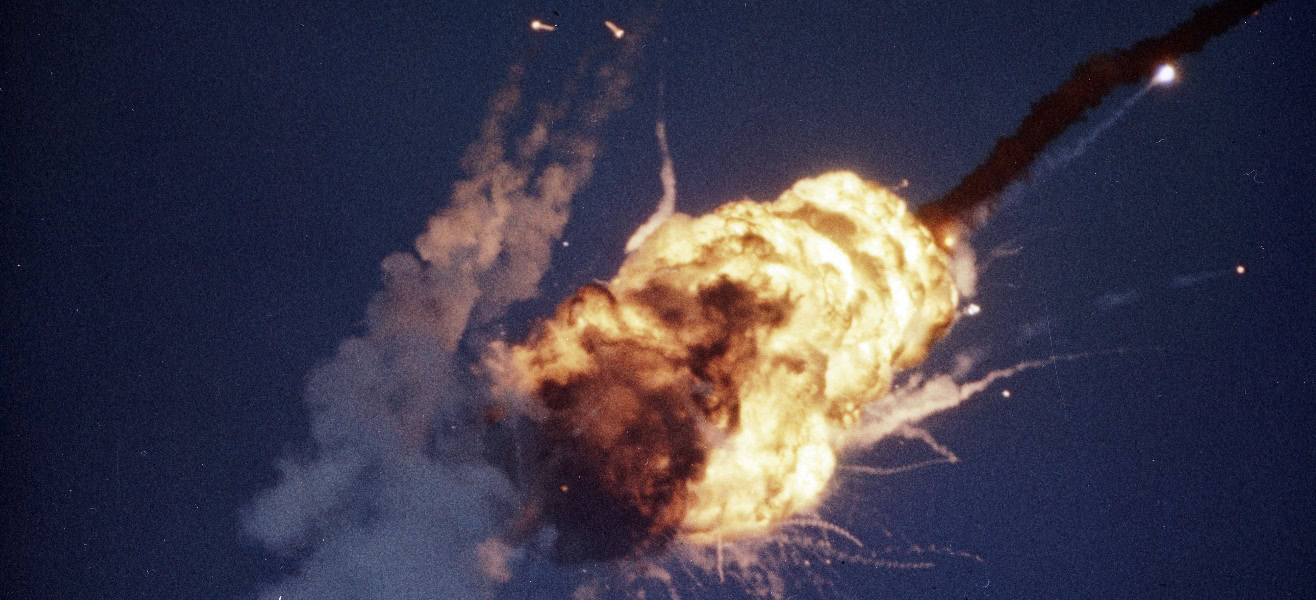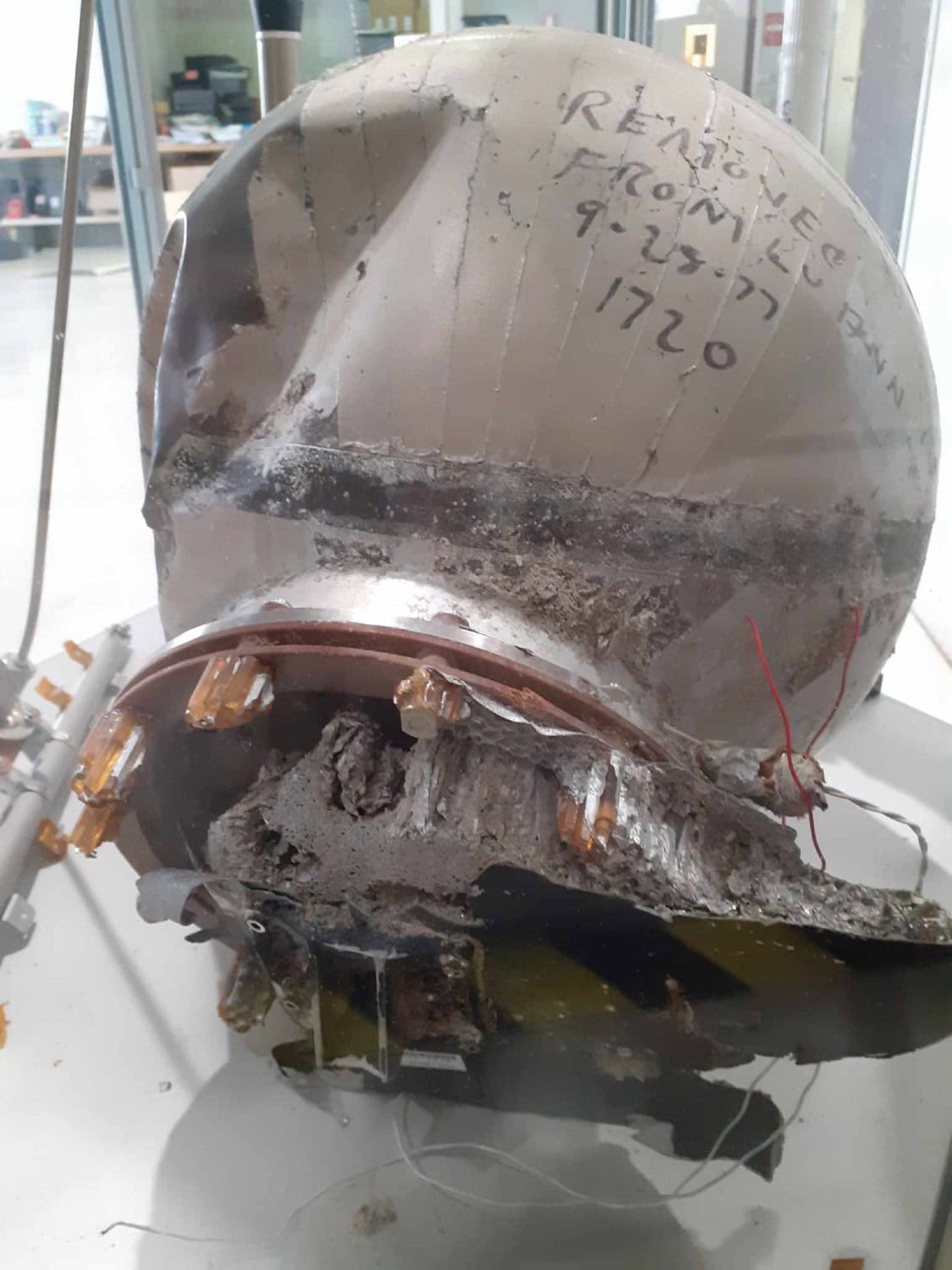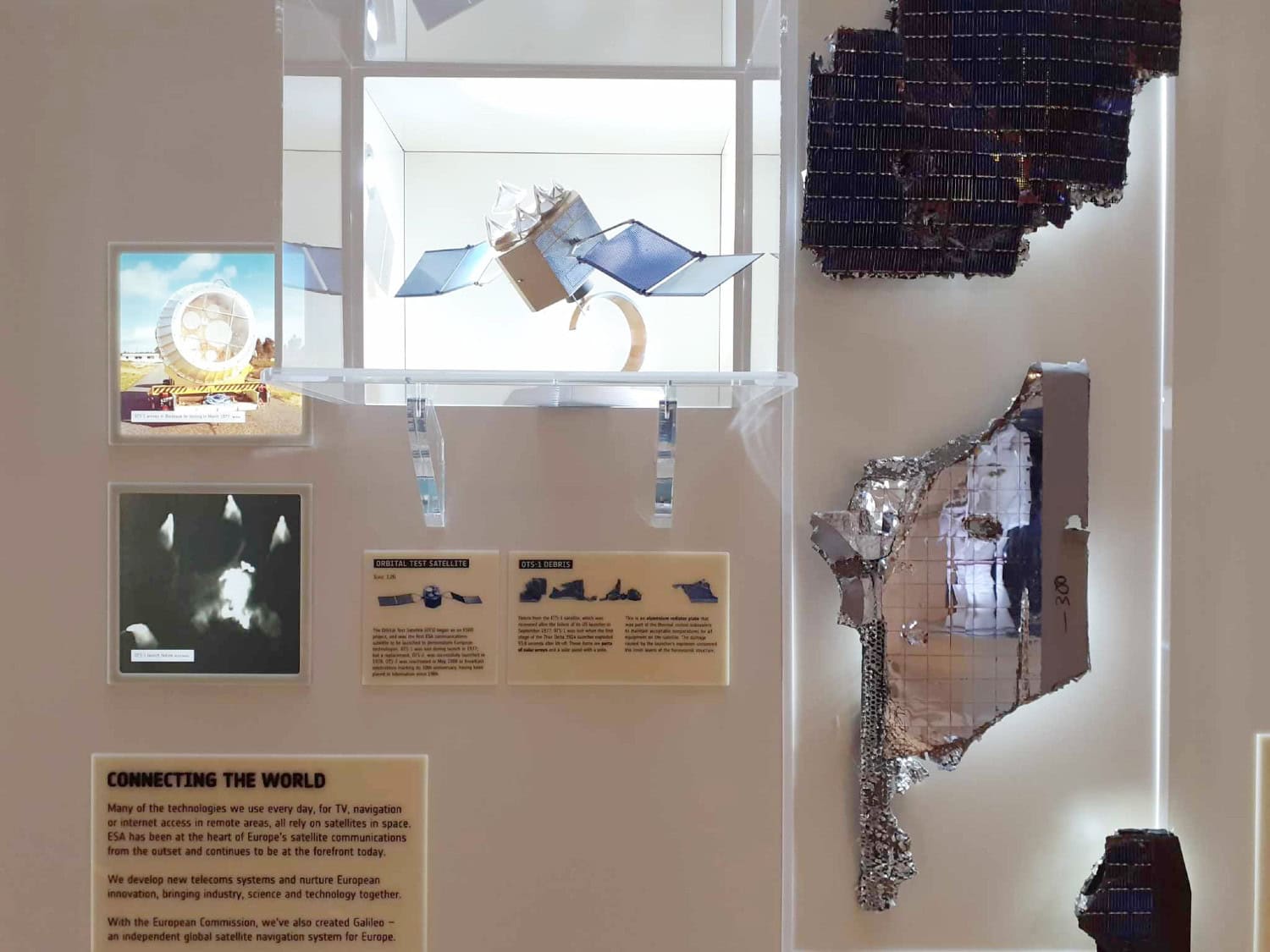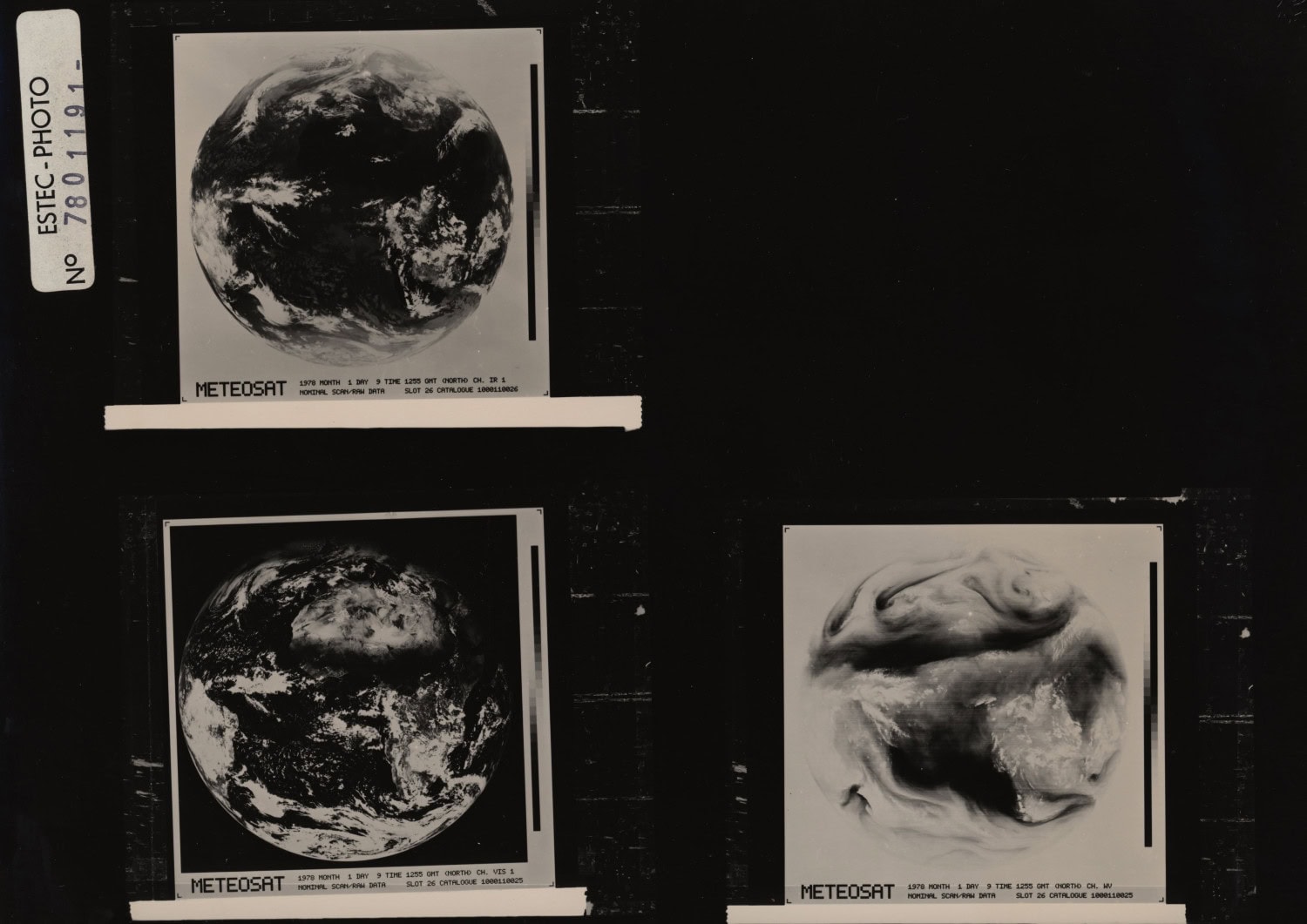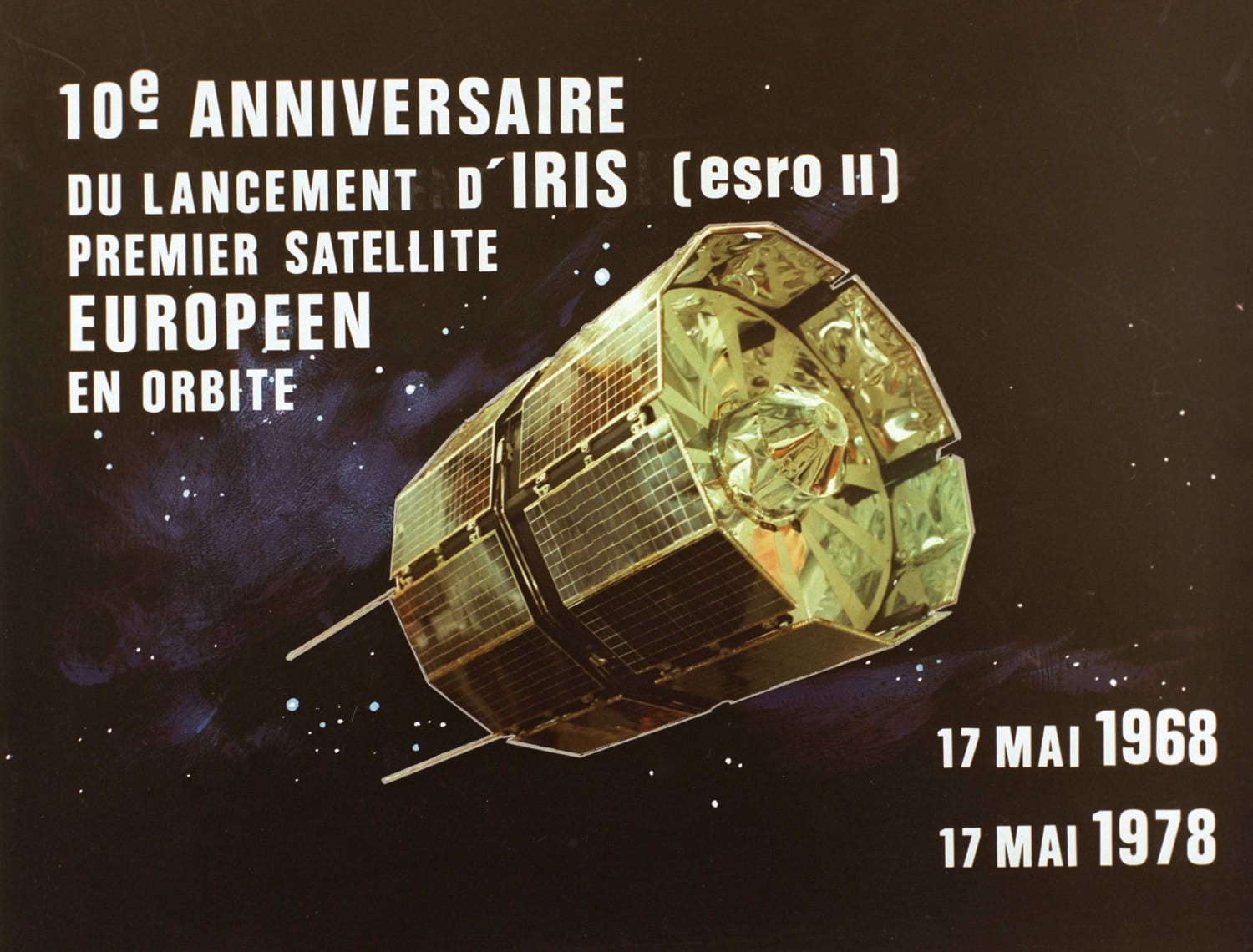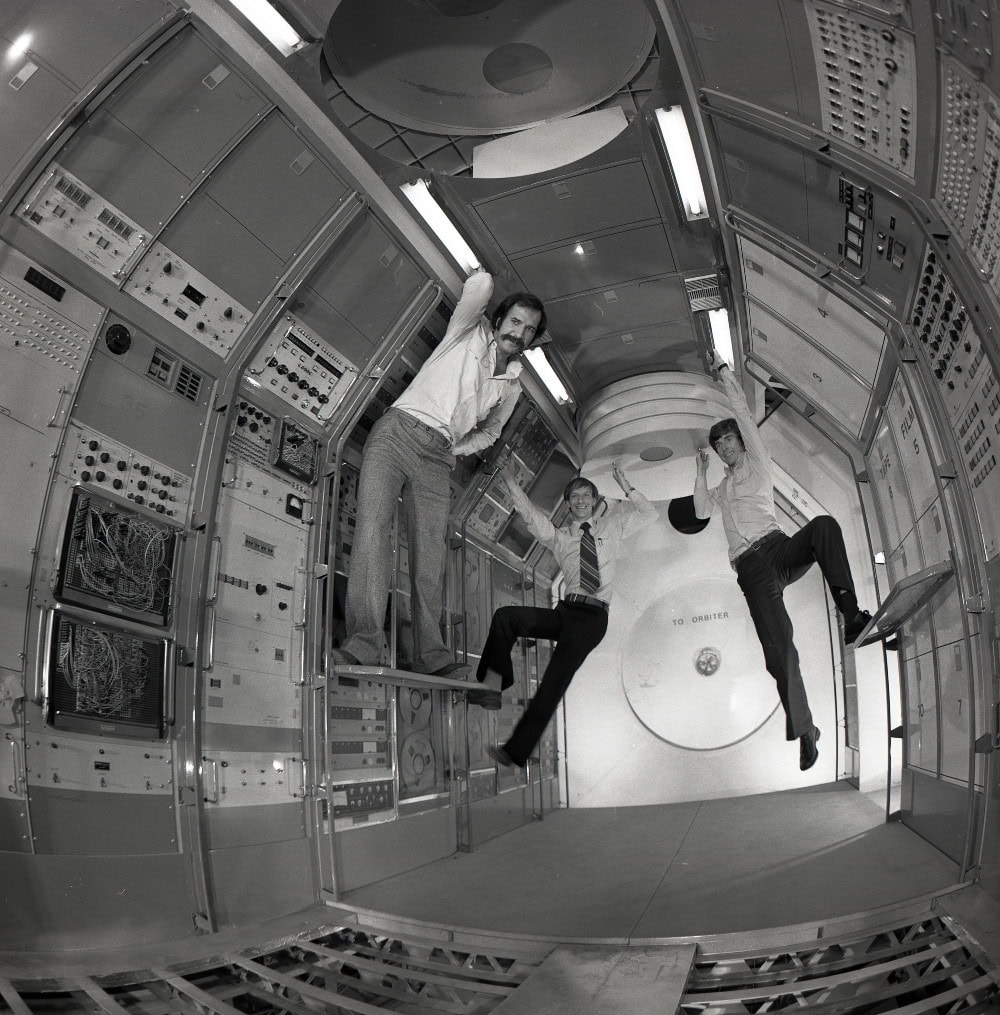The digitisation of another year of our historical picture collections has just been completed and pictures from 1978 are now open in the ESA Archives’ SHIP database. For this year, we take a slightly different perspective from usual as we reflect on failure - looking back at the loss of ESA’s OTS-1 satellite and focusing on the story of the OTS debris that was recovered after the launch failure and documented in 1978.
This particular journey therefore begins in the autumn of 1977, with the Orbital Test Satellite (OTS) – ESA’s first communications satellite programme. OTS-1 was launched from Cape Canaveral in the USA just before midnight at local time on 13 September 1977 (early morning on 14 September in Europe, hence the use of both dates). However, events did not unfold smoothly; the US Delta launch vehicle exploded 54 seconds after launch and OTS-1 was lost.
Or rather, OTS-1 as a complete satellite... Over the following weeks, recovery operations retrieved a considerable amount of hardware from the satellite and launcher, some on land and others from the sea. Examination of these parts revealed that one of the solid boost motors had been the source of failure. In January 1978, the satellite parts were documented by the ESA photographer P. Sjoedin (sadly, we don’t even know the first name of this former colleague) and at some point around this time a catalogue of the recovered satellite parts was compiled.
This catalogue includes 76 different elements of the satellite, ranging from switches to transponders, receivers, thrusters, honeycomb pieces and parts of the solar array. Where photographs were taken, the negative numbers were included in the relevant entry. The negatives themselves, relating to items 1-21 and 55-75 of the catalogue, were printed on 26 contact sheets. In another of our ‘archives mysteries’ it remains unclear why the remaining parts were not photographed!
These photographs and the catalogue are all now available in SHIP where they are arranged in 9 different series: 8 series of photographs according to the type of part and a pdf copy of the catalogue.
A selection of the debris itself also made its way into the ECSR collections in 2016, from the ESTEC Communications Office. (Since the consignment did not include all the items in the catalogue, we suspect that sadly, some of them have been lost with the passing years.) Our holdings today include the half hydrazine tank detailed in the catalogue (and now in SHIP). The catalogue makes no reference to the writing on the tank (which appears to read ‘REMOVEd FROM LU ANN 9-28-77 1720’) but we imagine this might refer to its recovery? Other parts, including pieces of the solar array, part of a solar panel and a radiator plate, are on loan from the ECSR to the ESRIN Memorabilia Wall, inaugurated in 2021.
Highlights from the rest of 1978
To conclude with a happy footnote, OTS-2 was successfully launched just months later on 12 May 1978. It successfully reached its final position in a geosynchronous orbit and more than doubled its target operational life of three years, retiring from operations at the end of 1983. Despite its rough start, the OTS programme went on to become one of the world's most successful telecommunications projects, ushering Europe into regional satellite communications.
There was also plenty of other activity going on in 1978, all of which was captured by the ESA photographers and documented in the photos now available in SHIP. Don’t miss milestones such as the first Meteosat images, celebrations for the tenth anniversary of the launch of ESRO-2B – ESRO’s first satellite, successful launches of other satellites including IUE (January 1978) and Geos-2 (July 1978), and the nomination of the three payload specialists for the Spacelab mission during the summer.
Outside ESA, 1978 marked the death of one of the Francophone world’s greatest artists – Jacques Brel. The most famous Belgian singer and actor of the 1960s and 1970s was born just outside the city of Brussels, which this month is hosting the EU-ESA Space Council. (More about Belgium’s space connections will be coming soon in our next news!)
ESA’s commitment to space sustainability
Since 1978, international efforts have been made to tackle the consequences of space debris. In 2002, the Inter-Agency Space Debris Coordination Committee (IADC) published the Space Debris Mitigation Guidelines, setting out how to design, fly, and dispose of space missions in ways that prevent the creation of further debris. ESA’s role in raising awareness of the issues and in providing solutions is coordinated through the ESA Space Debris Office in Darmstadt, Germany, who take care of ESA’s Space Debris Mitigation Policy and publish an annual Space Environment Report.
Building on a decade of ESA-wide collaborative work, the Agency has recently taken the lead in space sustainability with the introduction of its ‘Zero Debris approach’: a goal to significantly limit the production of debris in Earth and Lunar orbits by 2030 for all future missions, programmes and activities.
More information
To browse the new images, simply search for ‘1978’ in the SHIP database, or refer to our highlight on SHIP for additional details of its functionalities.
OTS debris – login to SHIP and search for series from ESTEC-PHOTO-1978.01.194 to ESTEC-PHOTO-1978.01.201
Catalogue of OTS debris in SHIP – OTS_DEBRIS_1978
ESA Space debris website and Zero debris approach
